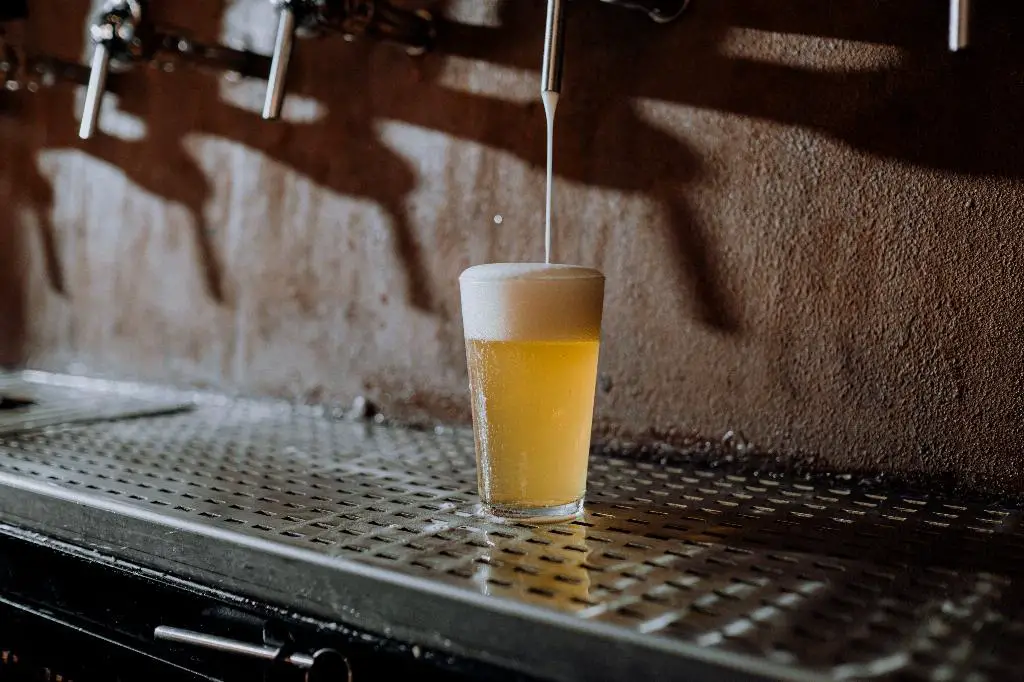Grolsch, a beloved beer brand known for its unique swing-top bottle design, was once a popular choice among drinkers in the UK. However, in recent years, the brand’s sales have declined, and it has become evident that several factors contributed to the decision to halt the production and sale of Grolsch beer.
Rise of Craft Beer
One significant factor that led to Grolsch’s decline in popularity was the rise of craft beer. Craft beer has captured the attention of beer enthusiasts, offering a wide variety of unique and flavorful options. With the craft beer movement gaining momentum, consumers began exploring different brews, opting for more local and artisanal choices rather than more mainstream brands like Grolsch.
Increase in Lower Alcohol Alternatives
Another contributing factor to Grolsch’s decline can be attributed to the increasing demand for lower alcohol alternatives. In recent years, there has been a growing trend towards healthier lifestyles, leading many consumers to seek out beverages with lower alcohol content. This shift in consumer preference meant that Grolsch, with its regular strength beer, struggled to compete with the emerging market for lower alcohol options.
Competition from Cheaper Rivals
Grolsch also faced fierce competition from cheaper rival beer brands. With consumers becoming more price-conscious, affordable alternatives started gaining popularity. These cheaper rivals offered similar taste profiles at a more budget-friendly price point, making it difficult for Grolsch to maintain its market share.
Changing Consumer Preferences
Consumer preferences in the beer market are continually evolving. What was once popular can quickly lose its appeal as new trends emerge. The shift towards lighter, fruitier, and hoppier beers, as well as the increasing popularity of other alcoholic beverages such as spirits and wines, impacted the demand for Grolsch.
Marketing and Branding Adjustments
Grolsch’s marketing and branding strategies might also have played a role in its decline. The brand failed to resonate with younger consumers, who are a significant part of the beer-drinking demographic. Keeping up with the ever-changing consumer landscape and effectively marketing to new generations is vital, and Grolsch may not have adapted its image and messaging accordingly.
Distribution Challenges
Effective distribution is crucial for any brand’s success, and Grolsch may have faced challenges in this area. Distributing a brand across numerous locations efficiently requires resources and careful planning. If Grolsch encountered difficulties in ensuring widespread availability, it may have impacted its sales performance.
Shift in Drinking Habits
The way people consume alcohol has also undergone changes in recent years. With an increasing focus on health and wellness, many individuals are choosing to drink less or abstain altogether. This shift in drinking habits has undoubtedly impacted the overall beer market, including the demand for brands like Grolsch.
Evolving Beer Industry
The beer industry is a dynamic and competitive landscape. Breweries are constantly innovating, introducing new flavors, styles, and packaging options to capture consumer attention. Grolsch, unable to keep up with these ongoing changes and adapt to new industry trends, may have struggled to retain its relevance and market share.
Operational Challenges
It is worth considering that Grolsch may have faced internal operational challenges that contributed to its decision to stop selling the beer. Issues like production costs, supply chain management, or even changes in ownership can have a significant impact on a brand’s viability.
Economic Factors
Economic factors, such as fluctuations in exchange rates, costs of raw materials, and changes in consumer spending patterns, can also influence a brand’s decision-making. If Grolsch faced economic pressures that made it difficult to maintain profitability or compete in the market, it could have been a determining factor in the decision to stop selling the beer.
Closure of Brewery
In 2015, Grolsch’s parent company, SABMiller, was acquired by Anheuser-Busch InBev, a global beer conglomerate. As a result of this acquisition, the Grolsch brewery in the Netherlands was closed down in 2016. The closure of the brewery further impacted the availability and production of Grolsch beer, ultimately leading to its discontinuation in certain markets.

Conclusion
In conclusion, the decision to stop selling Grolsch can be attributed to a combination of factors. The rise of craft beer, increasing demand for lower alcohol alternatives, competition from cheaper rivals, changing consumer preferences, marketing and branding adjustments, distribution challenges, shifting drinking habits, the evolving beer industry, operational challenges, economic factors, and the closure of the brewery all played a part in the decline of Grolsch. Unfortunately, these circumstances led to the discontinuation of Grolsch beer, marking the end of an era for loyal fans of this once-popular brand.
